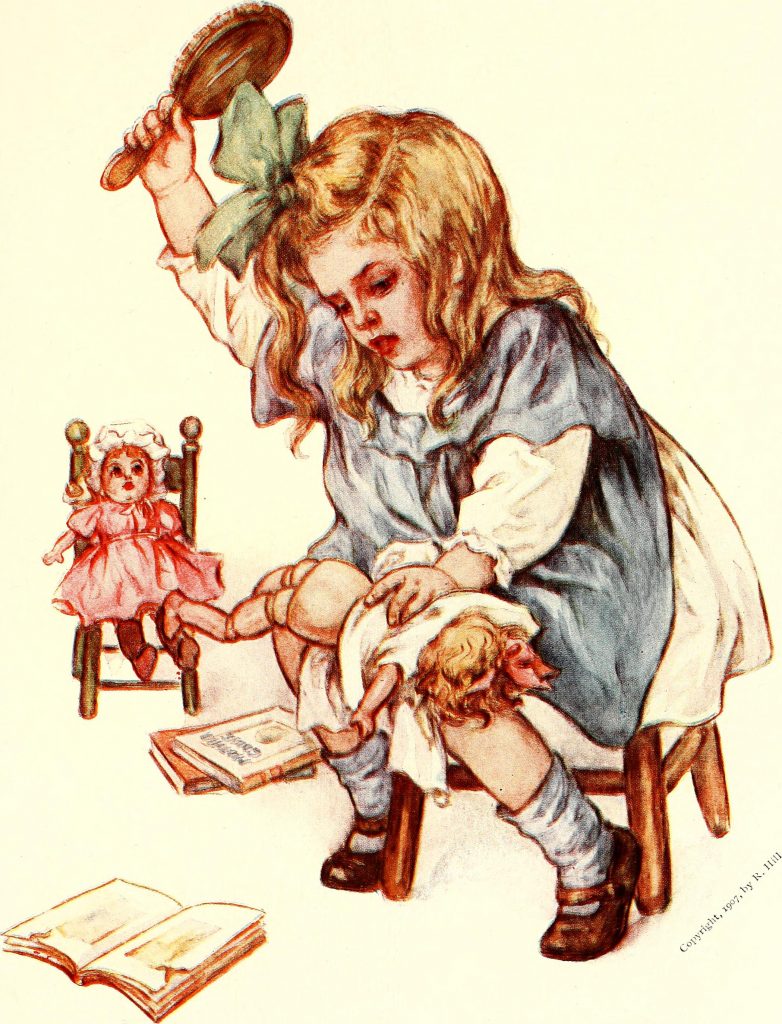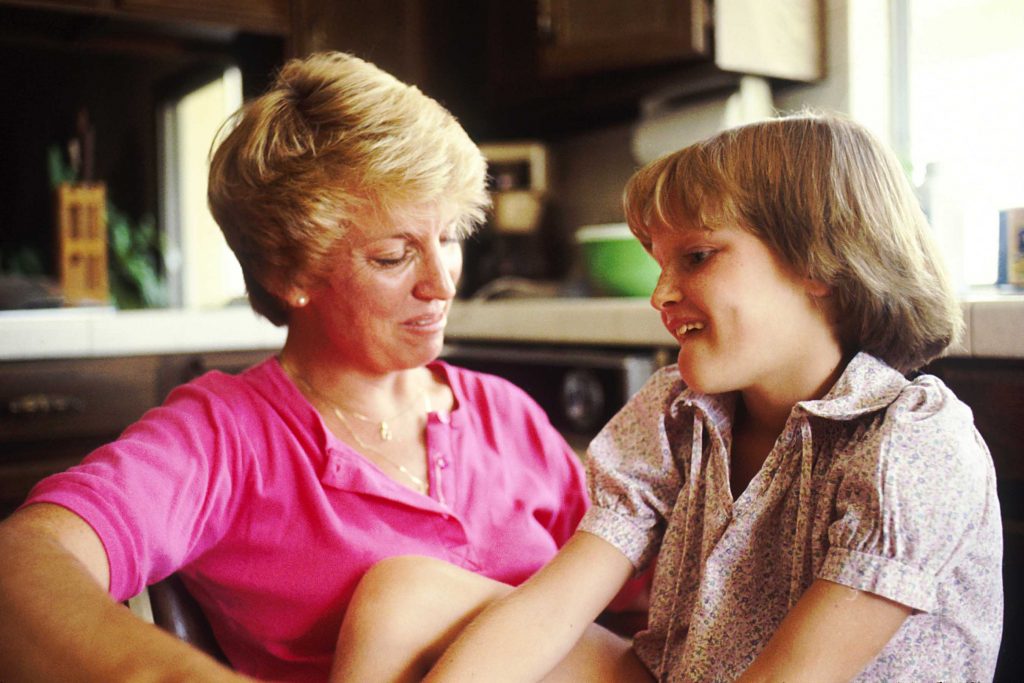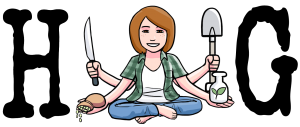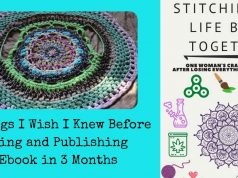A collaboration by Gurus Krystal & Hailey
A new study published in the Journal of Family Psychology, looks at five decades of research involving over 160,000 children. Researchers say it is the most complete analysis to date of the outcomes associated with spanking. It shows the more children are spanked, the more likely they are to defy their parents and to experience increased anti-social behavior, aggression, mental health problems, and cognitive difficulties.
“I was spanked and I’m fine.”
Many people in our society use this line to justify not only their own parenting, but how they were raised.
However, new research conducted over the past five decades has proven that spanking and physical abuse have virtually identical long-term consequences–all of which are negative.

As children, a lot of us are taught to “behave” through physical violence. As someone who was more than just spanked as a child, I can say for me (Hailey), it never stopped any of the behaviors my father was trying to diffuse. My grades did not get better, I did not stop lying, etc; the physical violence I was subjected to only made me fearful of the person whose job was to create a safe, understanding, and nurturing environment for me.
Statistically speaking, physical correction and spanking are still very common practices in American parenting.
According to a 2013 survey, over 80% of Americans say that “parents spanking their children is sometimes appropriate”.
Further, a survey published in 2010 (data set from 2002) revealed that nearly half of children aged 8 and 9 years old were hit with objects such as paddles or switches as a form of discipline. Four out of every five preschoolers (aged 3-5) experienced spanking as a form of discipline.
However, America is something of an anomaly in the larger world culture. In Sweden, for example, physical discipline of children has been illegal since the 1970’s, and as a result, Sweden has an entire culture of parents who now think that it’s normal to raise kids with kindness and compassion.
Children are the only group of people in our society not protected from assault and physical harm by others. Even animals and some livestock have more laws in place to protect them from bodily harm. While spousal abuse is condemned, corporal punishment of children remains legal in all 50 states, and parents’ right to spank is generally upheld in courts, even in extreme cases.
We’ve been so busy pretending that spanking is different than physical abuse, that we’ve failed to study its long-term psychological and behavioral effects in meaningful ways–until now.
The new research in question is the most complete analysis of spanking to date, and it unequivocally condemns any sort of physical punishment.
Previous research on the effects of spanking were often dismissed by experts in child development, since more obvious types of abusive treatment were also included in their analysis.
To clear up any confusion, the head researcher, Elizabeth Gershoff, made a point to define spanking as something separate from “physical abuse”. For the purposes of her research, spanking is defined “by an open-handed hit on the behind or extremities.”
This new study also found that “spanking…was not associated with more immediate or long-term compliance, which are parents’ intended outcomes when they discipline their children.”
So, not only does spanking create the same ill effects as more obvious and clear-cut forms of abuse, it doesn’t even make kids obedient or compliant.
Well, I could have guessed that myself. As a kid, what I (Krystal) experienced as discipline certainly walked the line between anybody’s definition of “abuse” and “spanking”. As a mother of five children, my views have evolved greatly over time.

Once, when my oldest son was 4, we were visiting with some new friends. My friend’s son and mine started to have a tug-of-war over a toy car, and her son hit mine. Without missing a beat, the other mom went over to her son, grabbed the car out of his hand, and spanked him swiftly.
Both my son and I were even more caught off-guard when she yelled at him, “We do not hit people!”–every word punctuated by a slap on her son’s bottom.
We excused ourselves shortly afterward and drove home in silence as we both processed what had happened in front of us in our own ways.
At the time, I did occasionally use physical discipline with my child. I simply didn’t have other, more compassionate tools at my disposal, and I was often overwhelmed.
That experience made me realize that I was not being congruent in how I was treating him, nor how I expected him to treat others. I knew I needed to find a better way.
Becoming aware of a dysfunctional cycle is great, but it’s only the first step toward actually breaking it.
One of the new study’s most ominous findings, I can certainly attest to:
Adults who were spanked as children were also “more likely to support physical punishment for their own children.”

For me, it’s been a conscious effort to truly break the cycle with my own children, and it took many years to learn new parenting skills.
Being spanked not only teaches us to normalize violence and “might makes right”, it makes us believe that human beings are inherently bent toward violence. That the only thing keeping any measure of order and civility in society is the threat of punishment.
Spanking creates the idea that when you do something an authority figure perceives as wrong, that they should be justified in using physical violence to stop you.
This way of thinking becomes a slippery slope as adults who disagree and turn violent toward one another, often due to behaviors created by their parents, and now believe they can make others act the way they want with the same use of violence.
This is a direct link to the normalization and minimization of police brutality. In 1987, research was conducted on the effects of corporal punishment on crime, and the results show that there’s actually a strong correlation between them. Instead of corporal punishment decreasing levels of crime, it’s been proven to have the opposite effect.
It also legitimizes the idea of religions with an angry, vengeful God, full of punishment for those who do not comply–and the unabashed vitriol of their followers.
Religious proponents of spanking are perhaps the most damaging and worrisome, because instead of a parent “losing control” or “getting angry” and then spanking, these parents believe that physical correction is their duty, and carry it out with a calm, calculated demeanor, regardless of their internal feelings. This chilling account of one woman’s childhood experience of Biblical spankings should be read with care and caution.
The purpose of spanking is to get kids to comply, to do what they’re told, and to be obedient. However, if a child learns only from punishment–without reason, compassion, and patience, their main focus is going to be on not getting caught.
Kids who expect to get punished may behave better when they know their parents are watching, but the threat of physical discipline means little when they’re alone or with others.
Proponents of spanking say that if they didn’t spank, that their kids would be unruly and noisy, rude, and inconsiderate. However, the true aim of parenting is to teach your child how to effectively interact with other humans, and that’s never been convenient or easy. Spanking might make things more simple in the short term, but in the long run, kids who are taught to fear violence in retaliation for their actions or inaction are not learning much about how to behave properly–only about what to avoid.
The relationship between parent and child is meant to be like that of scholar and apprentice, not warden and perpetrator.
There is no plausible way to keep your child under constant surveillance and still respect his or her autonomy, and yet–if you’re not there to enforce the rules with punishment, what will make them behave?
This is where the ability to govern oneself efficiently becomes a priority. Self governance can be used to describe a person, people, or group being able to exercise all of the necessary functions of power without intervention from any authority which they cannot themselves alter.
Teaching your children to govern themselves without violence will not only have better results in the early stages of their lives but it will make them a capable adult able to make the best choices and to think for themselves without needing to exert violent behavior toward others when met with a challenging situation.
Blind obedience to one’s parents gives rise to blind obedience of one’s corrupt bosses, laws, and even commercials. The adult-child is fully dependent on external input from so-called “authority figures” about how to live, what to do, and who to trust.
What to do instead of physical discipline?
It can feel overwhelming as a parent to learn about and accept the fact that physical punishment is harmful. I fully believe that we are all doing the best we can, and it can be challenging to accept that maybe what our parents did wasn’t actually good for us. It’s possible to recognize that the way we were parented was damaging to us, without throwing our parents under the bus.
Having compassion for the full scope of their journey as parents, as well as our own, can give us the strength and confidence we need to make different choices regarding how we treat our children.
This excellent article, called Ten Reasons Not to Hit Your Kids, gives a wealth of knowledge about what to do instead.
The Non Aggression Principle (NAP) is the fundamental axiom of libertarian theory and states that no one may threaten or commit violence (“aggress”) against another man’s person or property. Violence may be employed only against the man who commits such violence; that is, only defensively against the aggressive violence of another.
This extends to children and animals who are the most vulnerable and not able to fight back or defend themselves from an aggressor, who in the child’s case would be a parent, using physical violence and force as an attempt to make them behave.
The NAP is a fundamental choice, if many could learn to live by, that could be the answer to much of the violence we experience today.
So many of the traumas we carry with us through to adulthood are created by how we were treated as kids. Sadly, as adults, we end up passing on the same traumas to our very own children by replicating actions done to us. In this way, the damaging cycles continue.
Change starts with raising our children to have an understanding that violence within the household is far from normal. This is the first step to reducing violent thoughts, patterns and actions.

Over the years, I (Krystal) have worked to heal from the damage that my (lovely, involved, well-meaning) parents perpetuated. I have spent years learning about how to have mutually cooperative relationships with my children that are free of physical threats and arbitrary punishments, but that don’t leave me feeling like a martyr.
There’s no Lord of the Flies situation at my house, but there’s no spanking or punishment either. The way we do things has evolved into what we call relationship-based parenting. It’s less of a “method”, and more of a shift in our view of the parent-child relationship.
We’ve made the conscious choice to not perpetuate the cycle of violence in our children’s minds or bodies–and we also knew that we weren’t willing to get walked on by our kids, either. Just as it’s unkind to teach kids that they should expect to be controlled with violence, it’s also unkind to let them maintain the illusion that they can treat anyone violently without consequence.
Unschooling is a component of our journey, but the commitment to ending the cycle has really been key. If you’d like to learn more, you’re welcome to get in touch.
Helpful definitions:
Violence is defined by the World Health Organization as “the intentional use of physical force or power, threatened or actual, against oneself, another person, or against a group or community, which either results in or has a high likelihood of resulting in injury, death, psychological harm, maldevelopment, or deprivation”
Physical abuse is any intentional act causing injury or trauma to another person or animal by way of bodily contact.
Police brutality is the use of excessive and/or unnecessary force by police when dealing with civilians. “Excessive use of force” means a force well beyond what would be necessary in order to handle a situation.






Where are the Share buttons for this article? I see one in the left column to share your Facebook group, but none for sharing the post.
Also, all the buttons at the top (Facebook, Twitter, and whatever the right-arrow is meant to be) only open this same article in a new tab; they don’t open their respective social media windows.
Great info, I had no idea. Thank you for letting me know!
I would have read your article if not for your stupid ad asking me to join your newsletter hanging in front of me while i attempted to read it.
Stupid? Lots of people sign up for our newsletter through that, sorry it was a hassle. Much love, peace to you.
Totally disagree. I grew up in the 50’s where there was less crime, more respect and have watched our society steadily decline.
[…] This was well before the internet–and in the American South, where spanking was (and still is) especially prevalent. […]